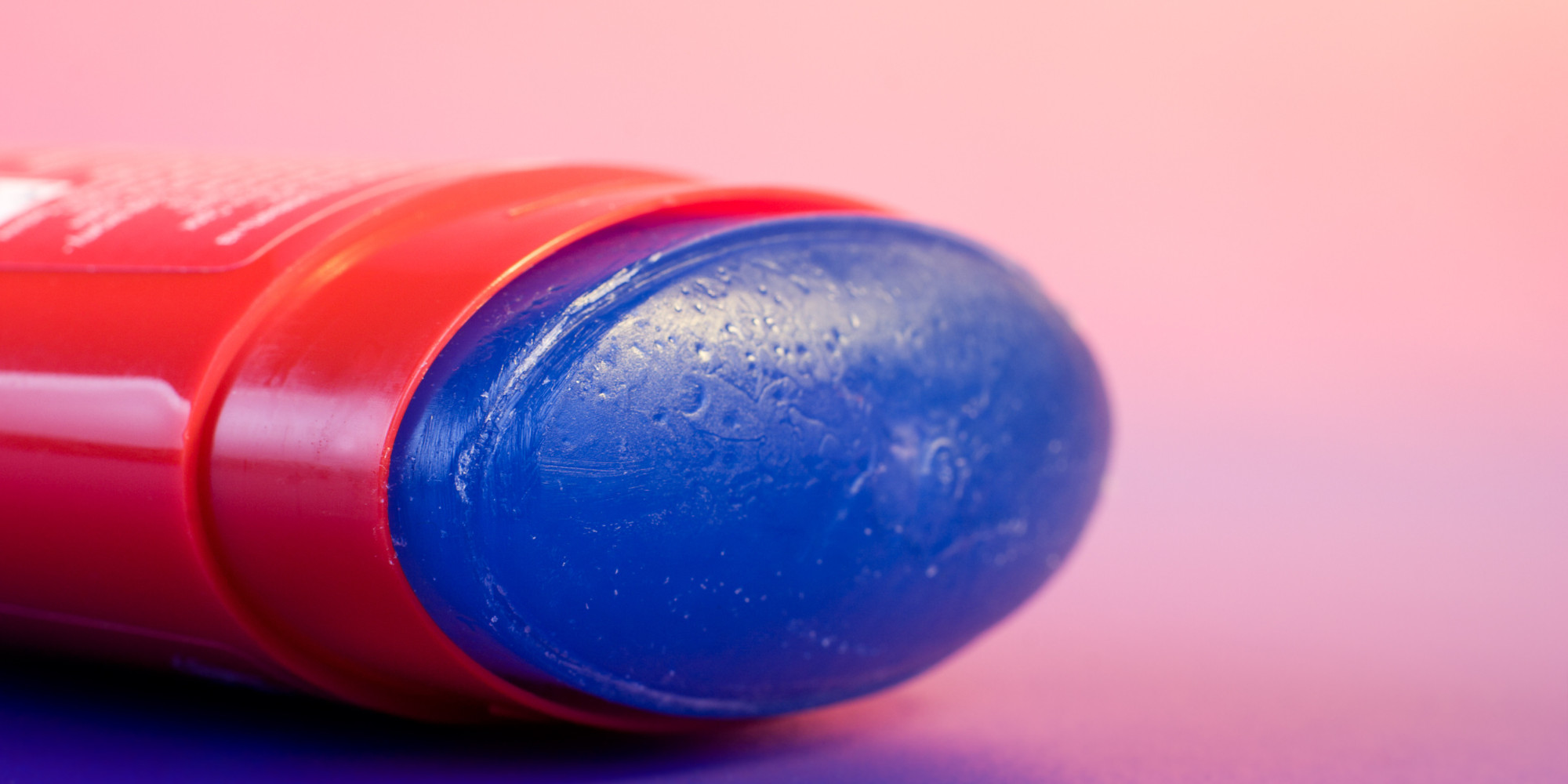Prownian Analysis of a Miscellaneous Bathroom Item
Description: I found a small elongated cylinder about 8 inches tall and weighing about 75-100 grams. The container has a grey body and a red cap, the bottom of the object has a twistable ring that rises and lowers the contents of the cylinder. The cylinder contains is a gel like blue solid with a distinct fresh and slightly floral smell. The contents have a moist texture but seems to dry quite fast without leaving any residue behind.
Deduction: Because of where I found it, it would seem to be some sort of hygiene tool used to keep the user smelling fresh and clean with its scent. The adjustable bottom allows for the contents to be lifted up once it has been used, similar to the way chapstick works. Also like chapstick, the contents must be rubbed on the skin in order to be applied by the user. The scent as well as the quick drying of the contents leads me to think that it would be applied to places on the human body that produce odor and sweat.
Speculation: This bathroom object is small in size which makes it convenient to bring in the car, to the gym, on camping trips, etc. Maybe this item is used by poorer people who can’t afford the luxury of showering and good hygiene, so this helps hide foul odors or maybe it is used by lazy people who don’t like to or want to shower. Athletes might use this after practice or game since they have worked up a sweat and are starting to smell.
- What ingredients help neutralize odors and prevent the user from smelling foul?
- Which smells are most refreshing and what demographic chooses what scents more?
- Why is the composition of the contents hard, yet moist and easily rubbed off while using?
Peer Review Citation and Reliable Article Citation
Ballarin, B., A. Mignani, F. Mogavero, S. Gabbanini, and M. Morigi. 2015. “Hybrid material based on ZnAl hydrotalcite and silver nanoparticles for deodorant formulation.” Applied Clay Science 114, 303-308. Academic Search Premier, EBSCOhost (accessed January 21, 2016).
Synopsis: The author explains the chemical make-up of what molecules are the key ingredients in neutralizing odors in deodorant. Commonly used zinc ricinoleate is the leading ingredient in commercial deodorizers but after testing a new hybridized material called (ZnAl–Ag NPs ) based on silver nanoparticles and ZnAl layered double hydroxides (ZnAl LDHs) on gram-negative bacteria, the new material has a higher deodorant activity than the prior material, zinc ricinoleate. The author focused mainly on the chemical make-up of what makes deodorant work and also compared new possible ingredients that will better the activity of deodorizers. The explanation of how they tested on the bacteria with different types of equipment helps the reader understand the science behind neutralizing the odor causing bacteria which is the basis of why these products are made.
Fontanez, S. 2008. “Body Odor Through the Ages: A Brief History of Deodorant.” Mental Floss Magazine. (accessed January 21, 2016).
Synopsis: Since the beginning of time, humans have dealt with foul odors and tried to cover them up. Egyptians, Greeks, and Romans all figured the best way to cover the odors was by using perfumes and fragrances to mask the scent such as incense, carob, aromatic oils and waxes. In the middle ages, the people who couldn’t afford perfumes stank all their lives because being naked was considered a sin even for bathing. In 1888, the first commercial deodorizer was sold but its main ingredient, Aluminum Chloride, irritated the skin and dissolved clothes. It wasn’t until the 1960s when the first aerosol, Right Guard, was made which created the billion-dollar industry we have today. The author checked the history behind deodorant as far back as the Egyptians and researched to see how humans dealt with odor since the dawn of time. She also checked more recent history on which commercial products helped revolutionize the industry and which products were stepping stones to what we see on the shelves today.


